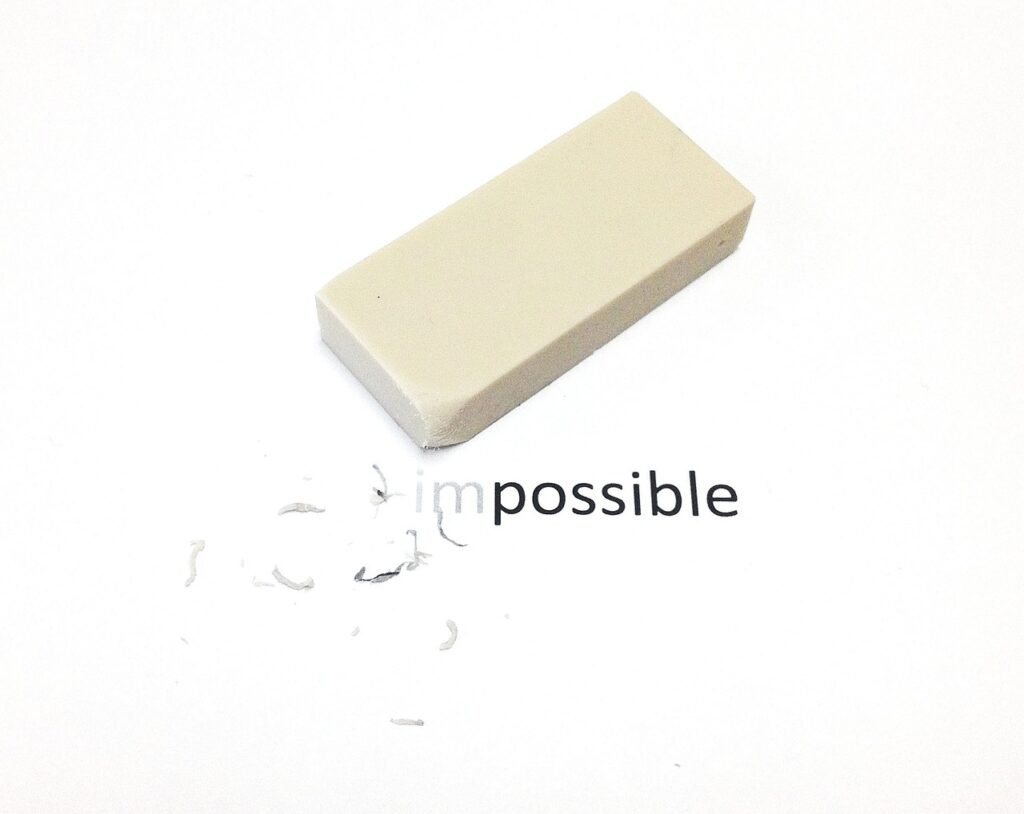Are you tired of struggling to find the perfect box for your needs? Look no further! In this comprehensive guide, we will take you on a journey through the world of box buying, providing you with all the essential information you need to make an informed decision. From understanding different box materials to knowing the right size and shape for your requirements, we’ve got you covered. So sit back, relax, and let us simplify the process of box buying for you!

This image is property of pixabay.com.
Determining Your Needs
Understanding the Purpose
When it comes to buying boxes, the first step is to understand your purpose. What will you be using the boxes for? Are you moving to a new house, storing items, or shipping products? By identifying the purpose, you can narrow down the types and sizes of boxes that will best suit your needs.
Identifying Size Requirements
Next, consider the size requirements for your boxes. Will you need large boxes for bulky or oversized items, or smaller ones for more compact items? Take into account the dimensions of the items you plan to pack or store to make sure you choose boxes of the appropriate size. Keep in mind that it’s better to have slightly bigger boxes than ones that are too small, as you can always add padding or fillers to prevent items from shifting.
Considering Weight Capacity
It’s important to consider the weight capacity of the boxes you choose. Different types of boxes have varying weight capacities, so it’s crucial to select boxes that can safely hold the weight of your items. Overloading a box can lead to damage, breakage, or accidents during transportation. Take the weight of your items into account and choose boxes that have a suitable weight capacity to ensure the safety of your belongings.
Assessing Durability
Durability is another essential factor to consider when buying boxes. You want boxes that can withstand the rigors of handling, transportation, and storage. For example, if you’re moving frequently or need long-term storage, you should opt for boxes that are made from sturdy materials to withstand more wear and tear. Assess the durability of the boxes based on the materials they are made of and the potential stress they will be subjected to.
Types of Boxes
Cardboard Boxes
Cardboard boxes are widely used for various purposes due to their versatility and affordability. They are available in different sizes and thicknesses, making them suitable for a range of items. However, it’s crucial to consider the strength and thickness of the cardboard when choosing boxes. Thicker and stronger cardboard will provide better protection for your items. Cardboard boxes are great for general moving and storage needs.
Plastic Boxes
Plastic boxes offer durability and flexibility, making them a popular choice for long-term storage or frequent moves. They are resistant to moisture and can withstand harsh environments, protecting your items from damage. Additionally, plastic boxes are stackable and nestable, saving valuable storage space. Look for plastic boxes that have reinforced corners and secure closures for added strength and security.
Wooden Boxes
Wooden boxes provide sturdiness and a classic aesthetic appeal. They are ideal for heavy or fragile items that require extra protection. Wooden boxes are generally constructed using sustainable materials and can be reused or repurposed. They are perfect for transporting valuable or delicate items and can provide excellent insulation against moisture and temperature changes. However, wooden boxes are often more expensive and heavier than other options.
Metal Boxes
Metal boxes offer enhanced security and protection for valuable or delicate items. They are commonly used in industries such as transportation and warehousing. Metal boxes are extremely durable and can withstand heavy loads, making them ideal for heavy-duty purposes. However, metal boxes tend to be more expensive and may be heavier compared to other materials.
Specialty Boxes
Specialty boxes are designed to meet specific needs. They can include wine boxes, file boxes, wardrobe boxes, and more. These boxes often come with additional features such as dividers, racks, or hanging bars to accommodate specialized items. If you have unique items that require specific packaging, it’s worth exploring specialty boxes to ensure optimal protection and organization.

This image is property of pixabay.com.
Choosing the Right Material
Cardboard Strength and Thickness
When it comes to cardboard boxes, the strength and thickness of the material are important considerations. Thicker cardboard with higher paperboard grades will provide more protection for your items. Additionally, look for corrugated cardboard boxes, as they have an added layer of fluted cardboard that enhances their strength and durability. Consider the weight and fragility of the items you’ll be packing and choose the appropriate cardboard strength accordingly.
Plastic Durability and Flexibility
Durability and flexibility are key factors when selecting plastic boxes. Look for boxes made from high-quality, impact-resistant plastics that can withstand stacking and rough handling. It’s important to choose plastic boxes with secure closures to prevent items from shifting during transportation. Additionally, consider the flexibility of the plastic, as some items may require a bit of give to fit properly.
Wooden Box Sturdiness and Eco-Friendliness
Wooden boxes are known for their sturdiness and eco-friendliness. They are typically made from sustainable materials and can be reused or recycled. When choosing wooden boxes, make sure they are made from strong, durable wood such as hardwood or plywood. Consider the weight of the wooden boxes, as they may be heavier than other options.
Metal Boxes for Security and Protection
If security and protection are your top priorities, metal boxes are a great option. Look for boxes made from heavy-gauge steel or aluminum for maximum durability. Metal boxes provide excellent resistance to impact, water, and theft. However, keep in mind that metal boxes can be heavier and more expensive compared to other materials.
Specialty Box Materials and Usage
Specialty boxes can be made from various materials depending on their intended usage. For example, wine boxes may be made from sturdy cardboard or wooden materials to protect fragile bottles during transit. File boxes may be constructed from heavy-duty cardboard or plastic to ensure the safe storage of important documents. Consider the specific requirements of your items and choose the appropriate material for specialty boxes.
Box Design Features
Closure Mechanisms
The closure mechanism of a box plays a crucial role in ensuring the safety and security of its contents. Different closure mechanisms include flaps, locks, handles with hole cutouts, and more. When choosing boxes, consider the ease of opening and closing the boxes and ensure that the closures are secure and reliable.
Handles and Grips
Handles and grips make it easier to carry and transport boxes. Look for boxes that have sturdy handles or grips to ensure comfortable and secure handling. Handles can be made from various materials such as plastic or rope, and they should be securely attached to the box to prevent any accidents or breakage.
Stackability and Nesting
If you’re short on storage space, consider the stackability and nesting capabilities of the boxes. Stackable boxes allow you to create stable towers without worrying about them toppling over. On the other hand, nesting boxes can be collapsed or nested within each other when not in use, saving valuable space. Evaluate your storage needs and choose boxes that offer the desired stackability or nesting options.
Visibility and Labeling
Having clear visibility and easy labeling options on your boxes can greatly simplify organization and access. Look for boxes that have transparent panels or windows, allowing you to quickly identify the contents without opening them. Additionally, choose boxes that have flat surfaces or clear areas for labeling purposes. Proper labeling will help you locate items easily and ensure efficient inventory management.
Reusability and Recycling
Consider the reusability and recycling potential of the boxes you choose. Opting for boxes that can be reused multiple times reduces waste and helps the environment. Additionally, look for boxes that are made from recyclable materials, such as cardboard or certain plastics. Properly recycling boxes after use ensures they can be repurposed and prevents unnecessary landfill waste.

This image is property of pixabay.com.
Considerations for Specific Items
Electronics
When packing electronics, it’s important to choose boxes that provide adequate protection against static, impact, and moisture. Look for boxes with built-in padding or consider using anti-static bubble wrap or foam inserts. Ensure that the boxes fit the electronics snugly to prevent them from shifting during transportation.
Fragile Items
For fragile items such as glassware, ceramics, or delicate collectibles, opt for boxes that provide extra cushioning. Consider using specialty boxes with dividers or inserts to keep fragile items separate and prevent damage. Use packaging peanuts, bubble wrap, or crumpled packing paper to provide additional protection.
Clothing and Textiles
When packing clothing and textiles, choose boxes that are clean, dry, and can effectively protect against dust and moisture. Opt for boxes with smooth interiors to prevent snags or damage to delicate fabrics. Additionally, consider using garment bags or acid-free tissue paper to preserve the quality of your clothing.
Books and Documents
To protect books and documents, use boxes that are sized appropriately to prevent shifting. Consider using acid-free boxes or archival-grade materials to safeguard against deterioration. Place heavier items at the bottom of the box to prevent damage to the books or documents above. Additionally, consider using bubble wrap or packing paper to provide extra support and cushioning.
Food and Perishables
When packaging food or perishable items, it’s crucial to choose boxes that are food-grade and can maintain the desired temperature. Insulated boxes with ice packs or gel packs can help keep food fresh during transportation. Consider using moisture-resistant or leak-proof boxes to prevent any spills or contamination.
Packaging Supplies and Accessories
Tape and Dispensers
Tape is an essential packaging supply for securing boxes. Look for high-quality packing tape that is durable and has a strong adhesive. Consider investing in a tape dispenser to make the taping process quicker and easier. Additionally, choose tape that is easy to tear by hand for convenience.
Bubble Wrap and Packaging Peanuts
Bubble wrap and packaging peanuts provide cushioning and protection for items inside boxes. Bubble wrap is ideal for protecting fragile or delicate items, while packaging peanuts help fill empty spaces and prevent items from shifting. Look for bu+]]bble wrap and packaging peanuts that are made from recyclable materials to minimize waste.
Packaging Paper and Cushioning
Packaging paper and cushioning materials such as foam sheets or foam rolls are useful for wrapping and adding additional protection to items. Packaging paper is especially helpful for preventing scratches or damage to delicate surfaces. Look for packaging paper or cushioning materials that are eco-friendly and can be recycled.
Labels and Markers
Labels and markers make it easy to identify the contents of each box and ensure efficient organization. Use labels that are self-adhesive and easy to write on. Consider using color-coded labels to categorize items or specific rooms, making unpacking a breeze. Additionally, invest in permanent markers that are waterproof and won’t fade over time.
Packing Tools and Equipment
Packing tools and equipment can greatly simplify the packing process. Items such as box cutters, scissors, tape measures, and packing tape dispensers are essential for efficient packing and sealing of boxes. It’s worth investing in high-quality packing tools and equipment to ensure a smooth packing experience.
Cost and Budgeting
Price Comparison
When buying boxes, it’s important to compare prices from different retailers or suppliers. Look for competitive pricing and consider any additional costs such as shipping fees or taxes. Keep in mind that cheaper boxes may not always guarantee durability or protection for your items, so strike a balance between price and quality.
Bulk Buying and Wholesale Options
If you need a large quantity of boxes, consider buying in bulk or exploring wholesale options. Many retailers offer discounts or special rates for bulk purchases. This can be a cost-effective solution, especially for those planning a move or needing long-term storage. Ensure that the quality and durability of the boxes meet your requirements, even when buying in bulk.
Balancing Quality and Cost
When budgeting for boxes, it’s important to strike a balance between quality and cost. While it may be tempting to opt for the cheapest option available, consider the long-term implications. Investing in higher-quality boxes may provide better protection for your items and reduce the risk of damage or breakage. Assess your needs and budget accordingly to ensure you make the best decision for your specific requirements.
Online Retailers and Stores
Finding Reliable Online Retailers
When shopping for boxes online, it’s important to find reliable retailers. Look for reputable online stores with good customer reviews and ratings. Consider factors such as shipping times, return policies, and customer support. Additionally, check if the online retailer offers a wide range of box options to suit your specific needs.
Brick-and-Mortar Stores vs. Online Shopping
There are benefits to both brick-and-mortar stores and online shopping when it comes to buying boxes. Brick-and-mortar stores allow you to physically see and assess the quality of the boxes before making a purchase. On the other hand, online shopping offers convenience, a wider range of options, and the ability to compare prices. Consider your preferences and priorities when deciding between the two options.
Reading Customer Reviews and Ratings
Before making a purchase, take the time to read customer reviews and ratings for the specific boxes or retailers you are considering. Customer reviews provide valuable insights into the quality, durability, and overall satisfaction of previous buyers. This information can help you make an informed decision when choosing boxes for your needs.
Environmental Considerations
Sustainable Packaging Options
Choosing sustainable packaging options can help reduce your carbon footprint. Look for boxes made from recyclable materials such as paperboard or certain plastics. Additionally, consider opting for boxes made from recycled content or those that are biodegradable. Sustainable packaging options contribute to a greener, more environmentally friendly approach to packaging.
Recyclable and Biodegradable Materials
Opting for recyclable and biodegradable materials ensures that the boxes can be repurposed or break down naturally over time. When purchasing boxes, look for labels or certifications indicating that the materials are recyclable or biodegradable. Properly recycling or composting boxes after use prevents unnecessary waste and helps protect the environment.
Reducing Waste and Optimal Sizing
To minimize waste, choose boxes that are sized appropriately for the items you need to pack or store. Using boxes that are too large or too small can result in wasted space and materials. Optimal sizing helps reduce the need for excess packaging materials, such as packing peanuts or bubble wrap. By reducing waste, you contribute to a more sustainable approach to packaging.
Box Maintenance and Disposal
Cleaning and Sanitizing
Proper cleaning and sanitizing of boxes ensure their longevity and safeguard against potential contaminants. Before reusing boxes, wipe them down with a mild detergent and water solution. Allow them to air dry completely before storing or repacking. If boxes come into contact with substances that require special cleaning, follow specific instructions to ensure safe and effective cleaning.
Proper Storage and Organization
To prolong the lifespan of your boxes, store them properly when not in use. Avoid exposing boxes to excessive moisture or extreme temperature variations. Keep boxes in a clean and dry environment, such as a storage area or closet. Proper organization of boxes by size or purpose makes it easier to locate specific items or access boxes when needed.
Recycling and Upcycling Options
When it’s time to dispose of boxes, consider recycling or upcycling options. Cardboard boxes can be broken down and placed in recycling bins. Recycling centers or waste management facilities often accept cardboard for recycling. Alternatively, you can repurpose boxes for storage or use them in DIY projects. Upcycling allows you to give boxes a new life instead of sending them to the landfill.
